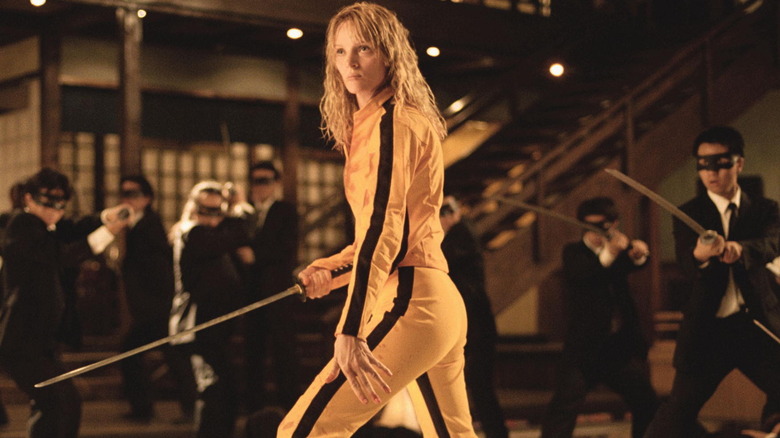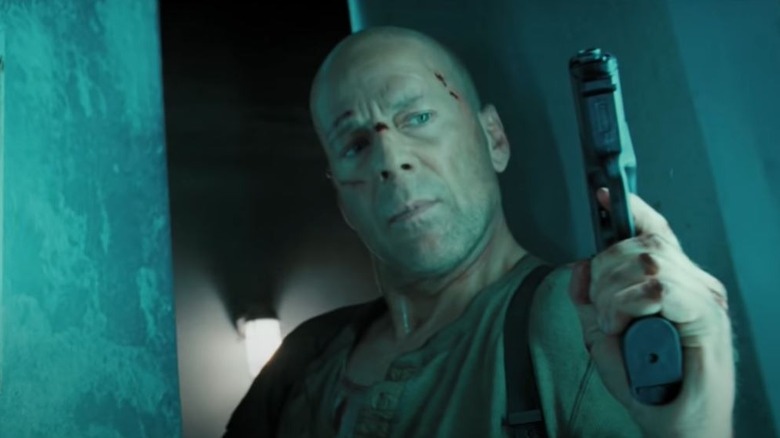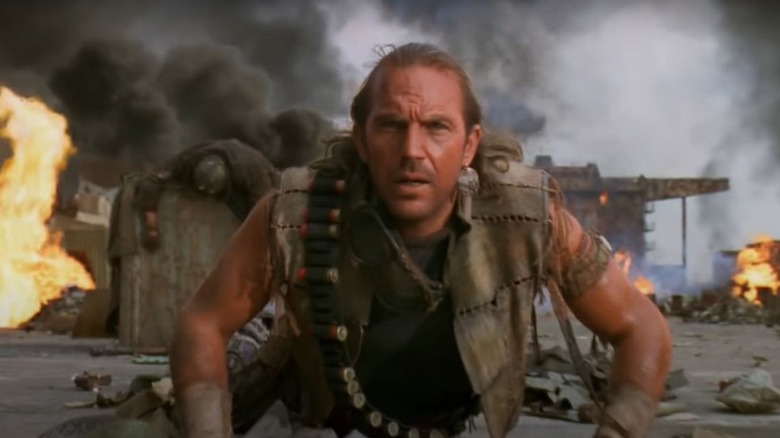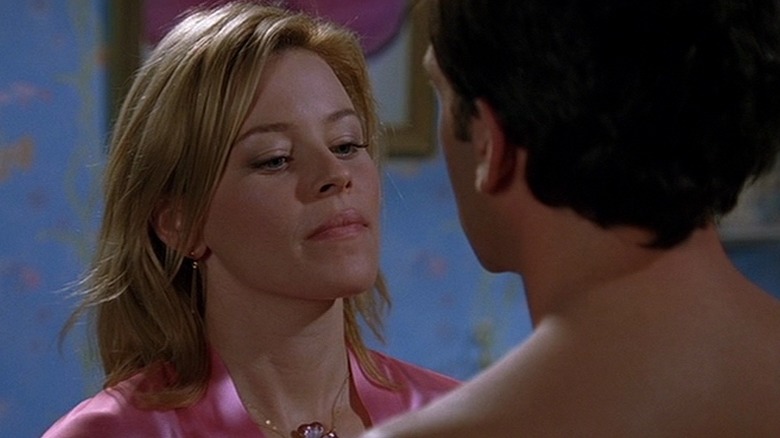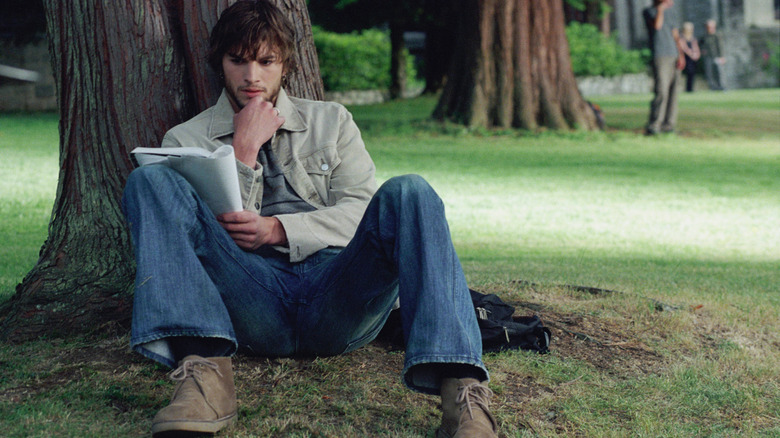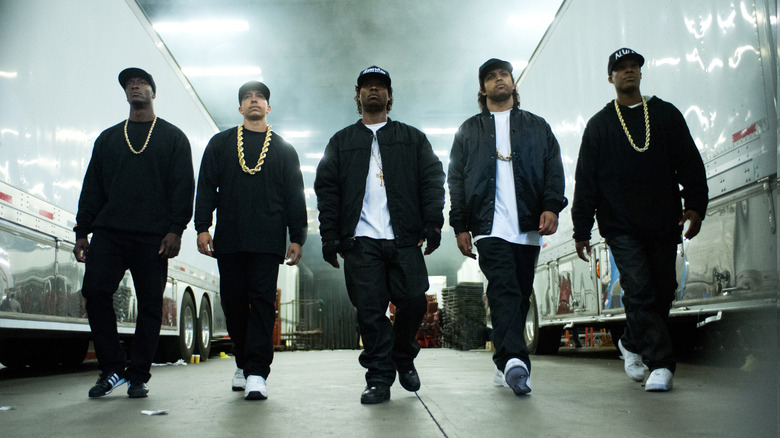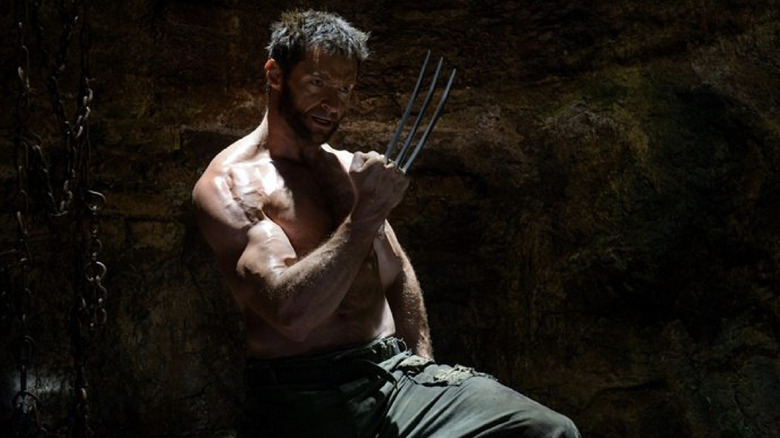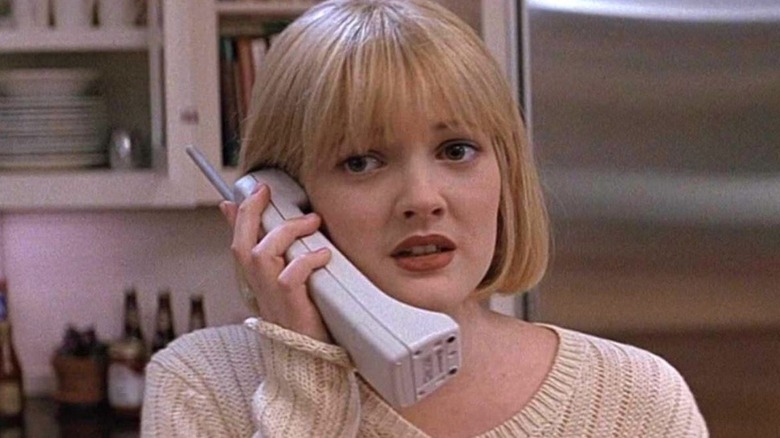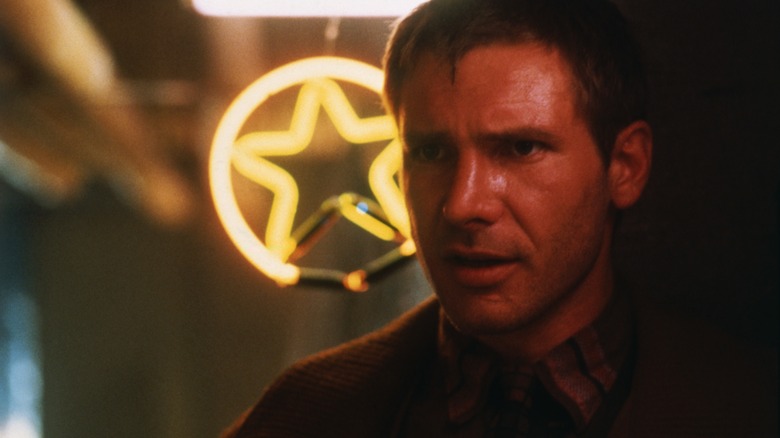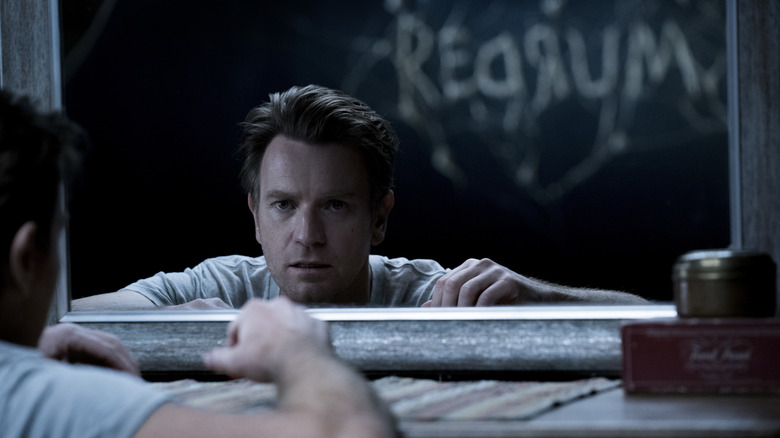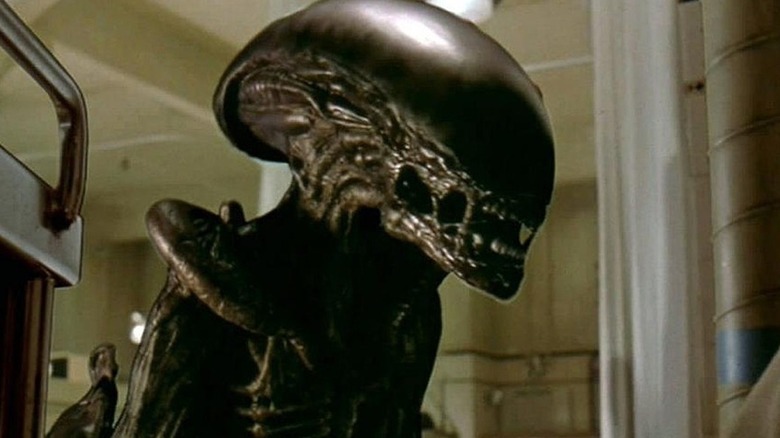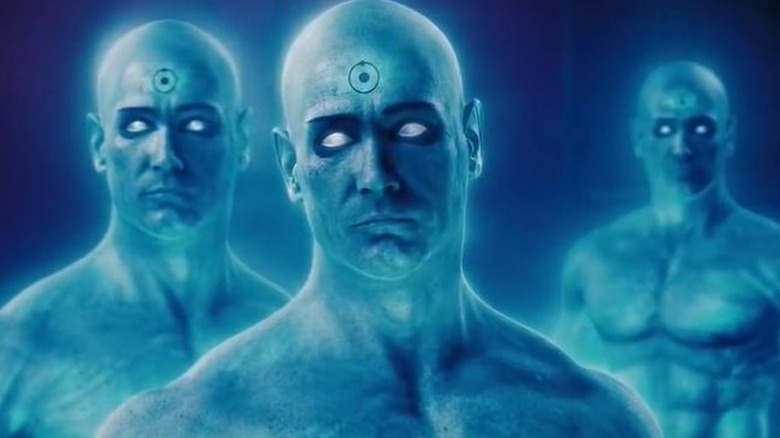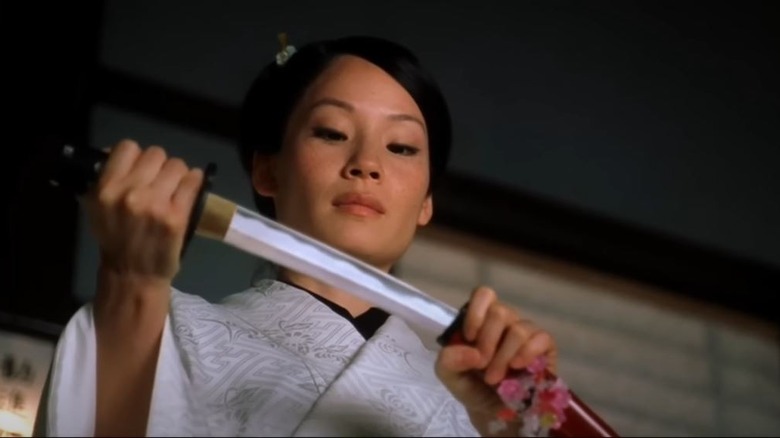Unrated Movie Versions That Are Much Better Than The Original
We may receive a commission on purchases made from links.
Cinema is an art form that can be interpreted and conceptualized in countless ways. As such, there has been a long history of government regulation on what can be presented in the media. Since 1968, movies released in the United States have followed the guidelines and strict rating system issued by the Motion Picture Association (formerly the Motion Pictures Association of America). Ranging from the all-ages 'G' rating to the adult-only 'NC-17,' the MPA guidelines help families make the proper decision about viewership appropriateness. However, even before there were film rating regulations, there has been an argument about government-imposed censorship.
"Censorship reflects a society's lack of confidence in itself," once said former US Supreme Court Justice Potter Stewart. As helpful as the MPA ratings can be for parents of young children, they do impose boundaries on artists and filmmakers.
A few decades ago, the studios found a loophole for such restrictions.
As 'director's cuts' and 'extended editions' began to proliferate in the late-90's heyday of censorship-friendly Blockbuster Video, filmmakers increasingly found ways to bypass the ratings board, releasing an 'unrated' version of their movies for at-home viewings. In the years since, there has been much debate over the necessity (and in some cases, self-indulgence) of alternate versions of films and whether they serve profitability, freedom of artistic expression, or the audience.
The filmgoing world, sometimes, has discovered that these versions of the movies are better than what was theatrically released. Below, a few films best viewed unrated.
Live Free or Die Hard: Unrated Edition
Built on the back of the 1988 American classic "Die Hard" starring Bruce Willis, the five-movie "Die Hard" franchise is a compendium of hard action, gritty violence, and profuse profanity. The series follows reluctant New York Police detective John McClane as he faces mercenaries, kidnappers and overly-confident masterminds. The driving themes of the franchise are plenty of obtuse one-liners and heavy gun violence. But for some reason (and that reason was the possibility of a better box-office), when it came to releasing 2007's "Live Free or Die Hard," much of the adult themes were diluted, debuting as the first, and only, movie in the series without an 'R' rating.
Despite being the most financially successful movie in the franchise, Willis fans failed to appreciate the watered-down McClane. His signature explicit catchphrase was edited short for the theatrical release, and it wasn't the only toothless moment. Making up for it, an "Unrated Edition" was released on DVD that restored all the blood, violence, and bad language that fans normally expect from the series. Although it is one of the few cases where the alternate version is shorter than the original, most fans agree it is the only way to watch this particular "Die Hard," including Time Magazine, which named it as a Top 10 DVD of 2007.
Waterworld: Ulysses Cut
The journey of making "Waterworld" was almost as wet and confusing as the original version of the film. The $175 million budget was a record-setting sum for film production at the time, numerous script rewrites and a set that required rebuilding on several occasions all created a boondoggle of mythical proportions, culminating with star Kevin Costner almost dying.
Worst of all, the movie flopped in theaters, leaving the studio holding an expensive dinner check. Dennis Hopper, who plays antagonist The Deacon, later told AV Club, "I think the studio sort of shot themselves in the foot by announcing it was so over budget, blah blah blah, it's going to be a failure... All this came out before we released it in the States. But I enjoyed it."
Subsequently, the home media release of "Waterworld" became as equally convoluted. Gaining an extended version for TV release, additional minutes of content were added. When the DVD copy of this extended cut hit stores, however, it included the heavy censorship necessary for broadcast television.
Interestingly, it was a fan-cut, re-edited version called the "Ulysses Cut" that blended the language and violence into a longer edition. Eventually, this rendition of the film gained release in a 3-disc Blu-ray set, and is now celebrated for bringing better context and the best cut of the film yet.
The 40-Year-Old Virgin: Unrated
It has nearly become standard for every new big-budget comedy to publish an unrated version with their home media releases, often implying (if not outright promising) more bad words and nudity. There are many examples, including fan favorites such as "Anchorman: The Legend of Ron Burgundy" and "The Hangover." But many of these 'unrated' cuts rarely impact the plot or tone of the film, and usually involve inserting alternative jokes and bits.
When it comes to comedies, all the audience expects are more laughs. Anyone who knows the habits of Judd Apatow knows that the man shoots a ton of footage, encouraging his actors from behind the camera to do take after take, tweaking lines and throwing in new jokes. Perhaps that's why if there's one alternative version of a comedy that stands above the rest for delivering more fun, context, and all-around monkey business, it is "The 40-Year-Old Virgin."
The unrated release of Apatow's 2005 film offers 17 minutes of additional footage, bringing the runtime to over two hours. Among five alternate scenes included on the DVD release are a nudity-laden dream sequence and a moment of Paula (Jane Lynch) attempting to purchase cannabis from her employees. With the movie's theatrical cut already criticized for running too long, the extended cut is for the most devout fans. Still, the extra laughs help make this already endearingly profane movie even better.
The Butterfly Effect: Director's Cut
Based on the subject matter alone, 2004's "Butterfly Effect" is a complicated movie involving theoretical physics and time travel. Centered around the concept that an injured butterfly could have a detrimental impact on the future, time-jumping Evan (Ashton Kutcher) struggles to keep his life on track as he attempts to remedy the trauma of his childhood. Squeezed into a runtime of under two hours, the complex themes failed to connect with critics, despite being financially successful.
Upon home media release, the filmmakers hoped to rectify some concerns with a director's cut. Bringing the film to an even 120 minutes, the alternative version fixed continuity mistakes and clarified missing information about the family. Most notably, the director's cut included a fourth alternative ending, which is drastically different from the others. Absent from the theatrical version, the new conclusion involved Evan traveling back in time to before his birth, then strangling himself with the umbilical cord.
Straight Outta Compton: Unrated Director's Cut
"Straight Outta Compton" is the energized biopic telling the story of notorious rap group N.W.A. 'R' rated, the film deep dives into the struggles of the musician's lives while addressing the racial issues that plagued southern Los Angeles during their rise. The violent gang-ridden tone of the film is accentuated by the fact that there was a real-life drive-by shooting on the set of the film (per XXL Magazine). Critically and financially successful, and touted for its historical accuracy, it is hard to see how the film could be edited any better.
Upon home media release, a B-side director's cut was included that offered 20 minutes of additional content. Director F. Gary Gray put it best when he discussed the alternative version with Collider: "There's more Compton, more controversy, more danger, more music, more relationships, more nuances. It's more of the original vision."
Aside from extending the musical performances, the additional footage explores many of the character's romantic relationships, especially Eazy-E, who gains the most traction in the director's cut. For fans that enjoyed the exploration of this founding West Coast rap group, the extra third-of-an-hour only bolsters the film.
The Wolverine: Unleashed Extended Edition
Years before "Deadpool" proved that an R-rated superhero film could generate box office success, there was 2013's "The Wolverine." The sixth installment of Fox's "X-Men" franchise, "The Wolverine" was equal parts a sequel to 2009's "X-Men Origins: Wolverine" and a spin-off of 2006's "X-Men: The Last Stand." The movie's titular star Hugh Jackman admitted to MTV (via Screen Rant) "There's such great temptation to make an R-rated 'Wolverine'. I've always felt that. I know a lot of fans would like that. I totally get it. If there was ever a superhero that was going to be R-rated, it's Wolverine." Ultimately, the studio got cold feet and the filmmakers decided the story they were telling did not necessitate the adult rating.
However, when it came to the home media release, the claws came out for a much anticipated unrated cut. In total, the extended version included over 12 minutes of footage, topped off with 12 scenes harnessed their digitally added blood. Fatefully, Jackman eventually made his R-rated Wolverine movie with 2017's "Logan." Still, before that movie was released, the "Unleashed" edition of "The Wolverine" was considered the epitome of the mutant's necessary on-screen violence.
Scream: Director's Edition
Wes Craven's 1996 film "Scream" changed the horror genre for years to come. Equal parts a subversion and a revitalization of the slasher theme, the movie spawned a collection of sequels and an influx of like-minded films. Unfortunately, when it came to releasing the ground-breaking feature, it struggled to receive an appropriate rating from the Motion Picture Association.
Craven goes into detail about the back and forth with the regulation group during a DVD special feature commentary. Essentially, it was the "intensity" of graphic scenes that had the MPA considering an NC-17-rating, which would significantly reduce the film's box office potential. Ultimately, Craven opted to edit back his original vision for a more manageable R-rating.
Of course, when it came to delivering a home media release, Craven didn't miss the chance to deliver his film the way he intended. The "Director's Edition" added over six minutes of content, mostly extending the goriest and most violent scenes. Honestly, what the MPA forced Craven to trim would easily pass an R-rating by today's standards in horror cinema. Still, for enthusiasts of the franchise, the purest way to watch the inaugural "Scream" movie is with all the blood that the director originally intended.
Blade Runner: Director's Cut
It would be difficult to find a movie that had more versions and director cuts than "Blade Runner." The 1982 science fiction epic about replicants and a hardened cop named Rick Deckard may be considered one of the greatest sci-fi movies ever made today; that was not always the case. When the film was initially introduced to test audiences, it was not well received, leading to a re-edit before the official theatrical release (per NY Times). The original cut, known as the "workprint" has since become available — as have multiple alternate versions of the film screened in North America and Europe.
Subsequently, the first official "Director's Cut" was released in 1992, featuring an unrated, significantly altered version of the movie. Changes included the addition of the unicorn dream sequence and the removal of the happy ending. However, "Blade Runner" would receive one more edit in 2007, this time giving director Ridley Scott full control of his vision. "The Final Cut" received an R-rating and a theatrical release in 2007. Today, there is debate over which version of the film is the best, but it is unanimous that every subsequent cut was an improvement from its US theatrical release.
Doctor Sleep: Director's Cut
The 1980 psychological thriller "The Shining" is considered one of the greatest scary movies of all time — by almost everyone, except the writer of the original novel Stephen King. Despite the widespread acclaim, it would take nearly 40 years for "The Shining" to receive a sequel.
Adapted from King's novel of the same name, "Doctor Sleep" was released in theaters in 2019 to moderate critical success, and largely considered a dud at the box office.
The most polarizing criticisms about "Doctor Sleep" had to do with the 152-minute runtime. Injected with long and dreary dialogue, the film either captivated its viewer or left them counting tiles on the theater ceiling. Thankfully, for those who were heavily invested in the deep background of the story, director Mike Flanagan had even more to offer. A home media release "Director's Cut" added over 18 minutes to the already staggeringly long film. For those looking for more from the chilling franchise, the additions add further depth and explanation to the world and characters in extended conversations and monologues.
Alien 3: Assembly Cut
Today David Fincher is a celebrated director for films like "Fight Club" and "The Curious Case of Benjamin Button." But, back in the early 90s, he was an acclaimed music video newcomer to Hollywood, who received a big break when handed the keys to the fan-favorite sci-fi horror franchise "Alien." Unfortunately, the studio was not yet ready to relinquish full control to the untested filmmaker, and the set of "Alien 3" was wrought with controversy.
"I had to work on it for two years, got fired off it three times," said Fincher in an interview with the Guardian. "I had to fight for every single thing. No one hated it more than me; to this day, no one hates it more than me."
Ultimately, "Alien 3" was released to less-than-favorable reception and considered the black sheep of the original "Alien" quadrilogy. Had this situation occurred later in Fincher's career or during the time of social media, there is an argument that there would have been an audience revolt similar to the type that lead to the restructured Snyder cut of "Justice League." But without the ability to reformulate the entire film, the closest rerelease of Fincher's original concept is the "Assembly Cut," which added over 30 minutes based on the director's original notes.
Watchmen: Ultimate Cut
Zack Snyder is handily the most well-known director to ever deliver a director's cut, having received $70 million to finish his original vision of "Justice League." However, the DC Studios epic was not the first time Snyder needed to re-edit a superhero film. With a budget of over $130 million, "Watchmen" was as big as movies come. Unfortunately, amidst a two-hour runtime and critical polarization, the subversive superhero film failed to make a substantial profit at the box office (per Reuters).
Now recognized for pushing the boundaries of movie run-times, Snyder was inevitably given the chance to release his version of "Watchmen" in a director's cut that ran for over three hours. The bolstered new edition added several scenes, extended others, and prolonged transitions amongst the added violence and gore. Still, Snyder was not done. There is an in-universe comic book called "Tales of the Black Freighter" that underlined the entire film and is read by supporting characters. The director initially wanted to film the additional content for the movie but settled for an animated extra. In the "Watchmen: Ultimate Cut," the motion comic is added at the appropriate moments above the previous director's cut, taking the final runtime to 215 minutes — perfect for the super fans.
Kill Bill: The Whole Bloody Affair
Originally released in two volumes, "Kill Bill" is a connective story about one woman's fight for revenge against a team of deadly assassins. The martial arts films are celebrated for their stylish themes and violent action. However, only the biggest fans of Quentin Tarantino's classics are aware of the mythology around "Kill Bill: The Whole Bloody Affair." Existing, but never officially released on home media, is a single cut that blends both volumes of "Kill Bill" into the one film Tarantino intended. Additionally, "The Whole Bloody Affair" reportedly includes an animated backstory of O-Ren Ishii (Lucy Liu) (per /film).
Unfortunately, "Kill Bill: The Whole Bloody Affair" is a movie that few have ever seen. Originally premiering at the 2004 Cannes Film Festival, Tarantino has shown his complete movie at few other theatrical screenings. Meanwhile, the director has been teasing a DVD release of the film in all its extended glory since as far back as 2009.
